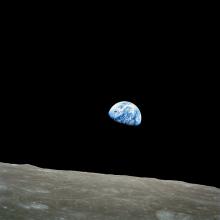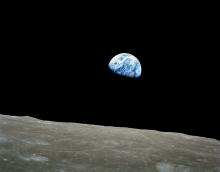Listen to today's episode of StarDate on the web the same day it airs in high-quality streaming audio without any extra ads or announcements. Choose a $8 one-month pass, or listen every day for a year for just $30.
You are here
Stormy Skies
Storms on the Sun can enhance or create storms here on Earth — from off-season typhoons in the western Pacific to ice storms in northern Canada.
The Sun produces giant magnetic storms. They generate outbursts of particles that can slam into Earth. The storms follow an 11-year cycle. At its peak, dozens of storms can blossom at the same time. At its low point, the Sun can go days or weeks with no storms at all.
Scientists first proposed a link between storms on the Sun and storms on Earth decades ago. Studies since then have supported the idea.
Two recent ones show links with off-season typhoons, and with winter storms in many parts of the globe.
The typhoons are in the western Pacific, near the Philippines and New Guinea. When the Sun is especially active, there’s an increase in the number of off-season typhoons. And they’re more likely to occur right after a solar storm reaches Earth. The Sun may trigger the typhoons by disrupting the circulation in the upper atmosphere.
The other study found a link between solar storms and massive winter non-tropical storms on Earth. In particular, it found that ice storms in Canada either broke out or grew stronger when jolts of solar wind hit Earth. Those blasts may create big waves in the upper atmosphere. The waves then heat lower levels of the atmosphere, triggering a series of events that intensifies storms at the surface — storms on Earth set off by storms on the Sun.
Script by Damond Benningfield






